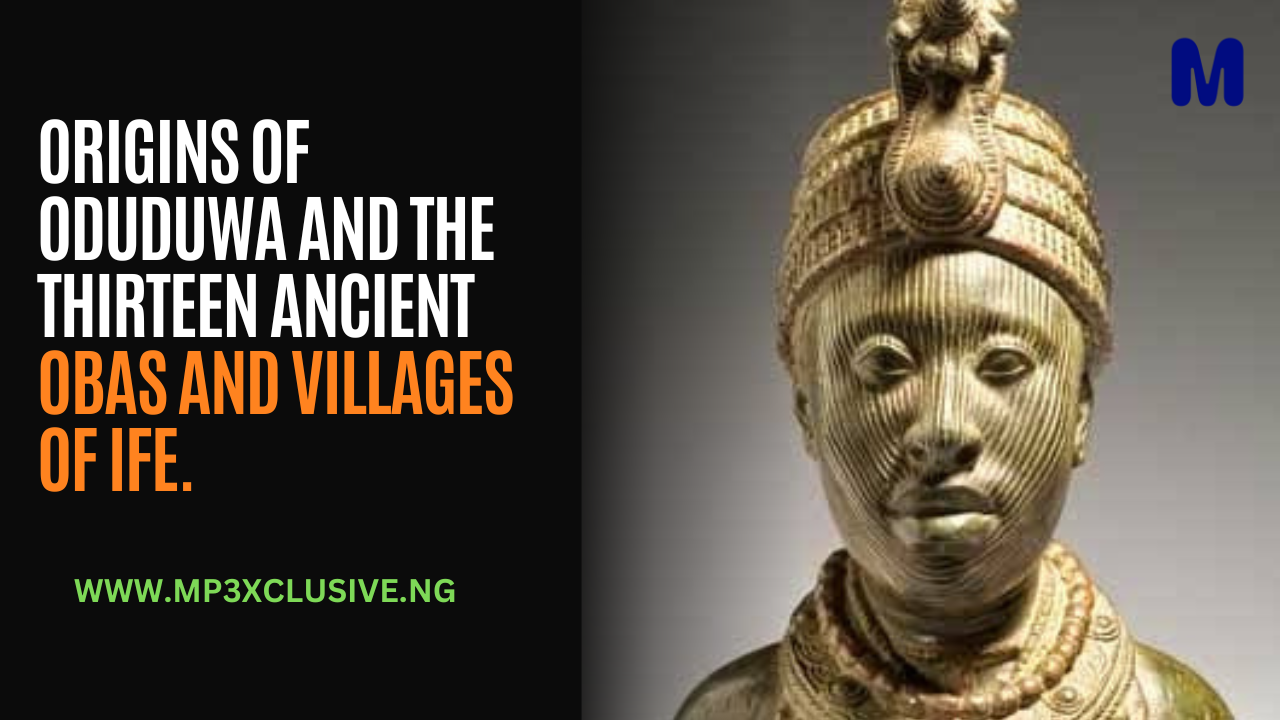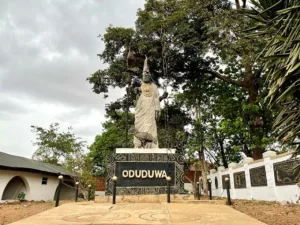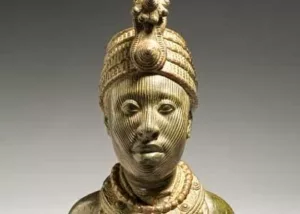Origins Of Oduduwa And The Thirteen Ancient Obas And Villages Of Ife

Ancient Ife c.500 BC, which would grow to become the largest urban centre and metropolitan area in the West African rainforest from 1000 to 1400 AD was geographically surrounded by a circular chain of seven hills namely; Oke Ora, the home of both Oduduwa aka Olofin Adimula / Olofin Aye / Oshin Ora & Oranfe aka Okanranjigbo / Onile ina.
The other 6 were; Oke Araromi, Oke Owa, Oke Ipao, Oke Ijugbe, Oke Onigbin, and Oke Obagbile.
As a result of these hills, the physical layout of the 13 original communities/ mega houses of pre-urban Ife inhabited by the Elus were nestled in what looked like a bowl when viewed from above at a distance – These hills provided them with security.
Each settlement had its own ruler (Oba) and separate market – However, a general one which served all the communities was known as “Oja Igbomokun”.
Hot Posts
This was the state of things for a while, but the expansion and subsequent explosive population growth of these communities tilted the existing trado-political arrangements that was prevailing.
Also: Nollywood: A Brief History Of Nigerian Film Industry
These 13 provinces/communities and their Obas were:
- Iloran – Ruled by Obaloran
- Omologun – Ruled by Obadio
- iIoromu – Ruled by Obaluru
- Imojubi – Ruled by Apata
- Iraye – Ruled by Obalaye
- Parakin – Ruled by Obalufe
- Ido – Ruled by Onipetu
- Iwinrin – Ruled by Obawinrin
- Odin – Ruled by Obameri
- Oke Oja – Ruled by Obajio
- Ijugbe – Ruled by Obalejugbe
- Oke Awo – Ruled by Owa Fagun
- Ideta – Ruled by Obatala
The natural advancement and evolution in societal complexity necessitated a series of alliances across the settlements leadership structure around the year 900AD and it brought about the emergence of ORANFE AKA (Okanranjigbo / Onile Ina) the priest-king of the Ọra deity as the first head of the 13 settlement alliance.
He presided over the spiritual and political affairs of the alliance. The agreement on the mode of succession of leadership was to be rotational amongst the original 13 after the end of the reign of the previous king chair.
Oranfe’s emergence as the head of the alliance was plagued with a lot of internal strife and agitations leading to major unrest but he was able to suppress them all.
After him, Obatala aka (Oseremagbo, Oluwa Aye, Alabalashe, Orishala, Olufe, Olofin Iwase) the priest-king of Ideta, the largest of the 13 original provinces succeeded Oranfe after his death as the head of the alliance.
Obatala’s reign as the head of the alliance was the last in the alliance as it was marked with lot of wars.
Oduduwa who came from Oke Ọra which was situated to the East of the thirteen original Ife communities then took the opportunity and led a revolution against Obatala the reigning ruler.
Over time, a lot of the settlements in the original alliance left and pitched their tent with the new and charismatic Oduduwa including Obameri, the Oba of Odin.

A major attack led by Oduduwa and Obameri forced Obatala and Obawirin to abandon Ideta and Iwinrin settlements respectively to establish new camp settlements at Ideta-Oko beyond the Esinmirin river.
After a long period of time, a peace agreement was brokered between the warring parties (Obatala vs Oduduwa) by one of the respected elders of the alliance named Ojomu from the Iloran settlement.
The agreement allowed for the return of both Obatala & Obawinrin to the ruins of Ideta and Iwinrin settlements under the new leadership of Oduduwa in a newly unified settlement now renamed “Ile-Ife” where Ooduwa was now in full control.
He then took up the local title of; Ọọni, Ọwọni or Ọghọnnẹ as the first Ọba of a unified Ife… The era of the 13 semi autonomous communities was gone forever.
According to the mythic creation account of Ile ife however, the city of Ife- harbinger of Yorùbá classical civilization was created by Obatala – Chief divinity, lord of Creativity and the moulder of human bodies It then fell into the hands of the Orisha Oduduwa who built and completed it.
Source: Yoruba Nostalgia Project






